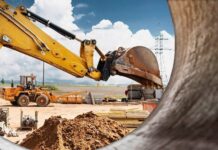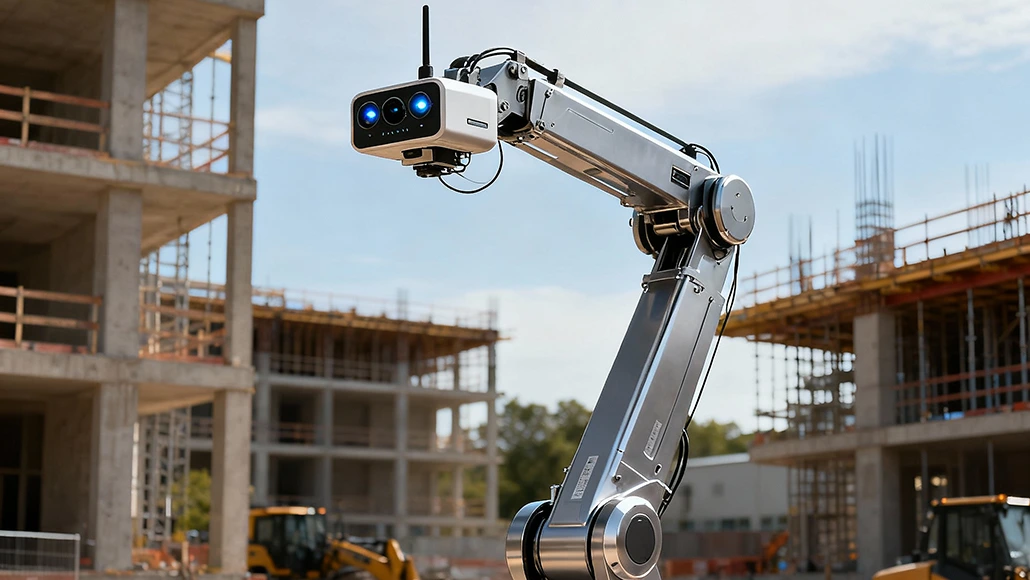Autonomous Cranes Transforming Construction Site Logistics
The construction industry stands at the threshold of a profound operational transformation, driven by technological innovations that redefine how materials move across job sites. Among these breakthroughs, autonomous cranes construction logistics represents one of the most significant advances, fundamentally altering the efficiency, safety, and precision of lifting operations. These intelligent machines, equipped with artificial intelligence, advanced sensors, and sophisticated control systems, are reshaping construction workflows and setting new benchmarks for productivity.
The Evolution of Construction Lifting Technology
Construction sites have long relied on crane operators whose skill and judgment determined the success of lifting operations. Traditional crane operation demanded years of training, constant vigilance, and physical proximity to potentially dangerous situations. However, the emergence of autonomous cranes construction logistics has introduced a paradigm shift. These systems combine real-time data processing, machine learning algorithms, and automated decision-making to execute lifting tasks with unprecedented accuracy while minimizing human intervention.
The global autonomous cranes market has experienced remarkable growth, expanding from approximately 3.3 billion USD in 2024 to a projected 16.1 billion USD by 2033, representing a compound annual growth rate exceeding 19 percent. This expansion reflects the construction industry’s recognition that autonomous technology delivers tangible benefits in operational efficiency, cost reduction, and workplace safety. Major infrastructure projects, particularly in smart city development and port modernization, have become early adopters of these transformative systems.
Intelligence Through Advanced Sensor Integration
The foundation of autonomous cranes construction logistics lies in sophisticated sensor networks that provide comprehensive environmental awareness. Modern autonomous cranes deploy multiple sensing technologies simultaneously, creating a detailed picture of their operational environment. These systems utilize cameras, laser scanners, radar units, and positioning sensors to track crane movements, identify obstacles, measure load weights, and assess surrounding conditions in real time.
Consider the sensor array on a contemporary autonomous tower crane. High-resolution cameras monitor the lifting zone from multiple angles, while LiDAR systems create precise three-dimensional maps of the construction site. Load cells continuously measure weight distribution, ensuring operations remain within safe parameters. Wind sensors detect environmental conditions that might affect stability, automatically adjusting operations or triggering safety protocols when necessary. This sensory integration enables the crane to perceive its environment with greater detail and consistency than human operators alone could achieve.
The data streams from these sensors feed into onboard computer systems that employ artificial intelligence algorithms to make operational decisions. These algorithms analyze patterns, predict potential issues, and optimize lifting paths based on multiple variables including load characteristics, obstacle locations, and weather conditions. The result is a system capable of executing complex lifting sequences with minimal human input while maintaining rigorous safety standards.
Precision and Operational Control
Autonomous cranes construction logistics delivers remarkable precision in load handling and positioning. Traditional crane operation involves inherent variability, as human operators manage multiple control inputs while compensating for load sway, wind effects, and spatial judgment. Autonomous systems eliminate much of this variability through algorithmic control that continuously adjusts movements based on sensor feedback.
Advanced control systems on autonomous cranes can execute multi-axis operations simultaneously, coordinating rotation, boom movement, and winch action while minimizing load oscillation. Some systems employ predictive algorithms that anticipate load behavior, applying corrective actions before problems develop. This level of precision proves particularly valuable in confined spaces or when positioning materials near existing structures, where centimeter-level accuracy prevents damage and reduces installation time.
The Turner Construction innovation project demonstrated these capabilities by implementing CraneView technology, which uses IoT sensors mounted on crane hooks to collect and analyze data on material flow, production rates, and crane utilization. The system employs artificial intelligence to learn and classify each item picked, capturing weight and cycle time to optimize crane usage. Project teams access this information through online dashboards, enabling data-driven decisions that improve efficiency and reduce delays.
Safety Enhancement Through Automation
Safety considerations drive much of the interest in autonomous cranes construction logistics. Construction remains one of the most hazardous industries, with crane-related incidents accounting for significant injuries and fatalities. Autonomous systems address these risks through multiple mechanisms that enhance operational safety.
First, autonomous cranes remove operators from high-risk positions. Traditional crane operation often requires personnel to work at considerable heights or in proximity to heavy loads. Autonomous systems allow supervision from ground-level control stations, distancing workers from potential hazards. This separation proves especially valuable in harsh environments such as offshore platforms or extreme weather conditions.
Second, automated safety systems continuously monitor operational parameters and intervene when unsafe conditions develop. These systems can detect overload situations, identify collision risks, and recognize unstable ground conditions faster and more reliably than human observation. When problems arise, automated responses occur within milliseconds, potentially preventing accidents that human reaction time might not address quickly enough.
Anti-collision systems represent a particularly important safety feature. These systems use sensors and computer vision to detect other cranes, structures, power lines, and personnel within the operational envelope. When potential conflicts emerge, the system automatically adjusts movements or halts operation, preventing the collisions that cause many construction accidents. Some advanced systems even communicate with other autonomous cranes on site, coordinating movements to avoid interference.
Integration with Site Logistics
The transformation of construction site logistics through autonomous cranes extends beyond individual lifting operations. These systems integrate with broader construction management platforms, enabling coordinated material flow that optimizes overall project execution. When autonomous cranes connect with project scheduling systems, they access information about upcoming material needs, allowing proactive positioning and reduced waiting time.
Port operations provide compelling examples of this integration. Autonomous rail-mounted gantry cranes have revolutionized container handling at major facilities worldwide. These cranes operate continuously with minimal human intervention, increasing cargo handling speed while reducing labor costs. The systems coordinate movements across multiple cranes, optimizing container placement and retrieval sequences. This approach has proven so effective that ports implementing autonomous crane technology report substantial improvements in throughput and operational efficiency.
In mining applications, autonomous cranes handle ore transportation with similar benefits. Rio Tinto’s Australian operations employ robotic cranes that transport materials around the clock, significantly increasing productivity while minimizing workplace hazards. The systems adapt to changing conditions, adjusting operations based on equipment status, material characteristics, and processing demands.
Economic and Operational Benefits
The adoption of autonomous cranes construction logistics delivers measurable economic advantages. While initial investment costs exceed those of conventional cranes, the return on investment materializes through multiple channels. Reduced labor requirements lower ongoing operational expenses, while improved precision minimizes material waste and rework. Enhanced equipment utilization means fewer cranes can accomplish more work, reducing capital equipment needs.
Continuous operation capability provides another economic benefit. Autonomous systems can work through night hours or adverse weather conditions that might limit human operators. This extended operational window accelerates project timelines, reducing financing costs and enabling earlier revenue generation. Projects in sectors with tight schedules, such as infrastructure development or industrial plant construction, find this capability particularly valuable.
Predictive maintenance enabled by autonomous systems’ constant self-monitoring reduces unexpected equipment failures. Sensors track component wear, operating hours, and performance trends, alerting maintenance teams to issues before breakdowns occur. This proactive approach minimizes costly downtime and extends equipment lifespan, improving the total cost of ownership.
Implementation Challenges and Considerations
Despite compelling advantages, implementing autonomous cranes construction logistics presents several challenges. Regulatory frameworks in many jurisdictions have not kept pace with technological developments, creating uncertainty about compliance requirements. Some regions mandate human oversight for all lifting operations, limiting full autonomous capabilities. Industry standards continue evolving as stakeholders balance innovation with safety assurance.
Technical infrastructure requirements can pose obstacles, particularly on smaller projects or in remote locations. Autonomous systems need reliable communication networks, adequate power supply, and sometimes enhanced ground preparation. Integration with existing construction processes requires careful planning and may involve temporary efficiency reductions during transition periods.
Workforce adaptation represents another consideration. While autonomous systems reduce some labor needs, they create demand for technicians capable of maintaining and troubleshooting sophisticated equipment. Construction companies must invest in training programs that develop these capabilities within their organizations. Moreover, change management becomes essential as traditional crane operators transition to supervisory roles or different positions.
Future Trajectories
The trajectory of autonomous cranes construction logistics points toward increasingly sophisticated capabilities. Artificial intelligence development continues advancing, promising systems that handle more complex scenarios with greater independence. Integration with other autonomous construction equipment—such as self-driving trucks and robotic assembly systems—will create coordinated jobsites where multiple machines work in concert without human intervention.
Digital twin technology represents an emerging application that will enhance autonomous crane capabilities. Digital twins create virtual replicas of physical cranes, allowing simulation of operations before execution. This capability enables testing of lifting plans, identification of potential problems, and optimization of sequences in a risk-free environment. When combined with real-time sensor data, digital twins provide unprecedented insight into equipment performance and operational efficiency.
The construction industry’s movement toward sustainable practices will further drive autonomous crane adoption. Electric and hybrid cranes reduce emissions while autonomous control systems optimize energy consumption. These environmentally conscious approaches align with broader industry commitments to reduce carbon footprints and meet increasingly stringent environmental regulations.
As autonomous cranes construction logistics continues maturing, the technology will extend beyond large-scale projects to smaller construction sites. Cost reductions, improved reliability, and standardized implementations will make autonomous systems accessible to a broader range of contractors. This democratization of technology will accelerate industry-wide transformation, establishing autonomous lifting operations as standard practice rather than innovative exception.
The convergence of artificial intelligence, sensor technology, and mechanical engineering has created construction lifting systems that outperform traditional methods in safety, efficiency, and precision. As these systems prove their value across diverse applications—from high-rise construction to port operations—their adoption will reshape how the construction industry approaches material handling challenges, establishing new standards for what modern jobsites can achieve.































